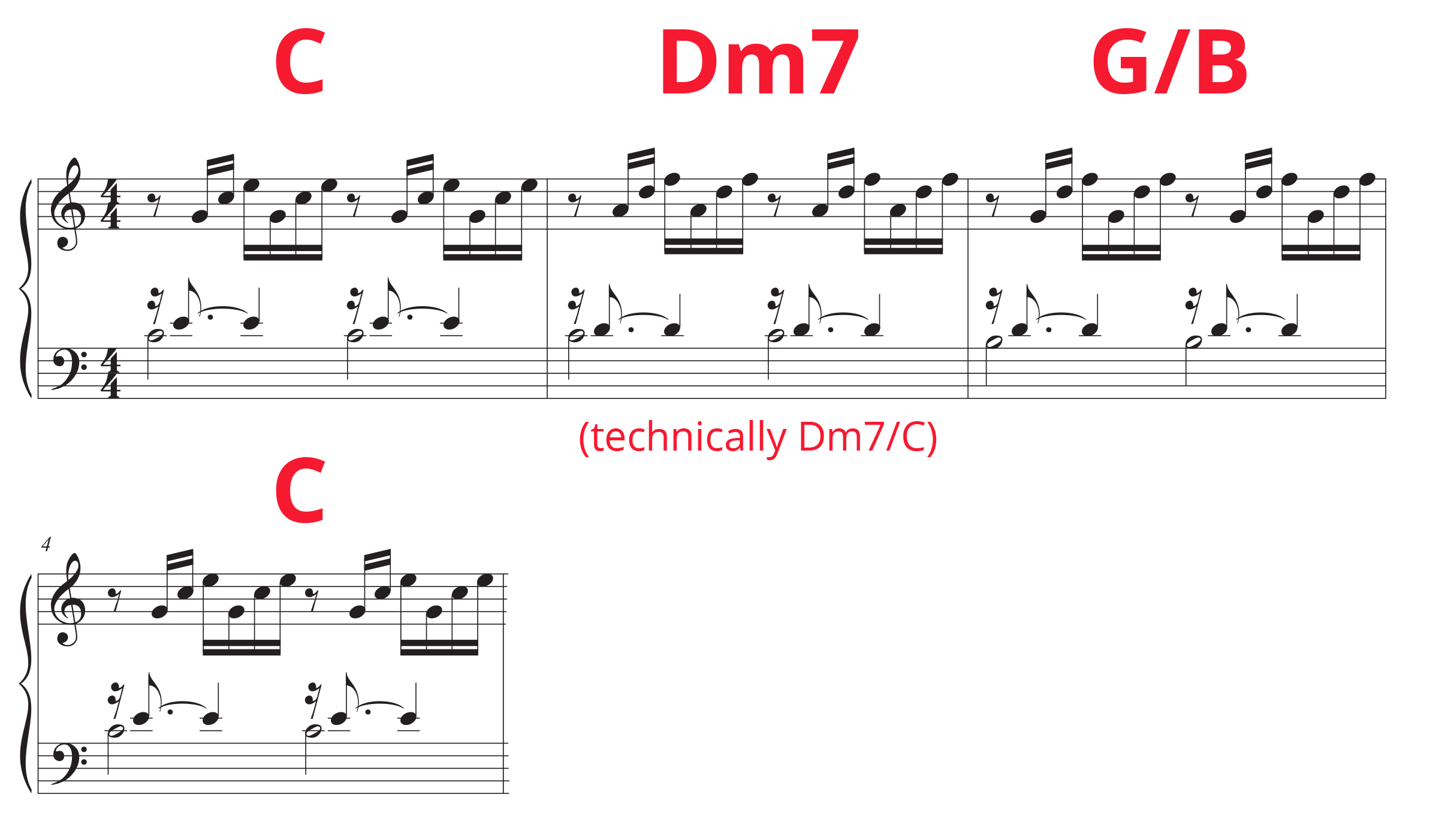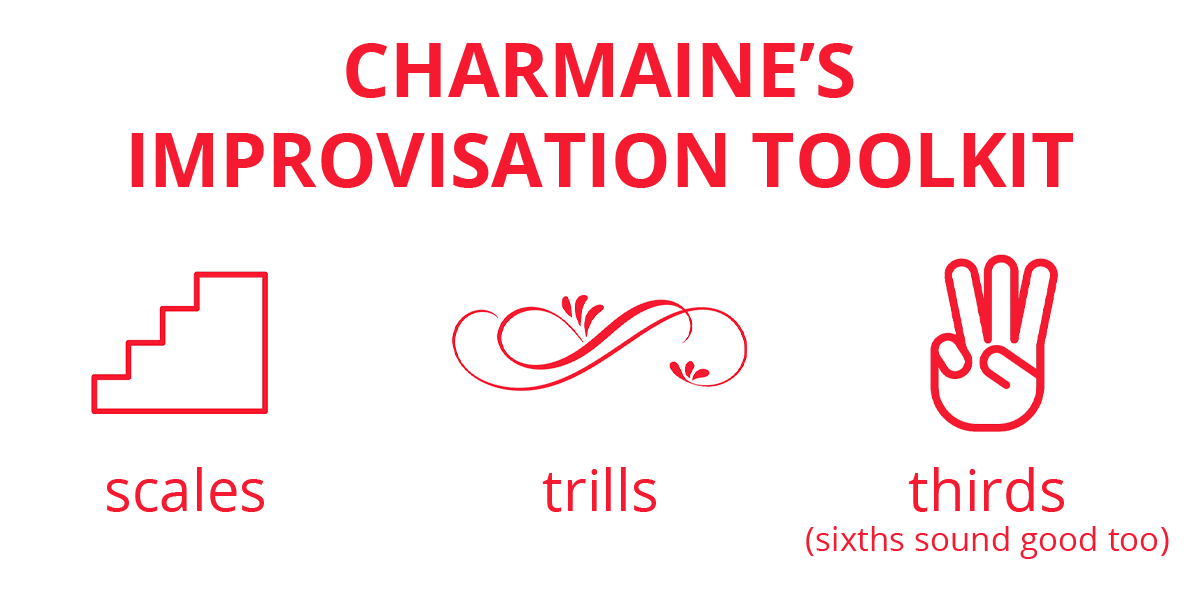Improvising scares me!
Without sheet music, I don’t know what to play. Improvising feels overwhelming, like being thrown into the ocean with no lifejacket. I’m not sure what notes go together and I’m afraid of playing things “wrong.”
And I’m not alone. Many classically trained pianists are afraid of improvising. Classical training teaches you to read music like a pro, but few modern classical musicians studied improvisation as part of their education.
Well, in this lesson, Lisa finally teaches me improv! It’s scary at first, but the experience has taught me that anyone can improvise.
Subscribe to The Note for exclusive interviews, fascinating articles, and inspiring lessons delivered straight to your inbox. Unsubscribe at any time.
For this lesson, Lisa chose a song that I’m familiar and comfortable with already: “Prelude in C Major” by J.S. Bach. (Psst: it’s also in C Major so I don’t have to worry about sharps and flats!)

So for this exercise, we’ll borrow the chord progression, rhythm, and melodic patterns of this piece.
“Prelude in C” also has some pretty easy chords to improvise upon. The little section we’ve chosen has this progression:
C – Dm7 – G/B – C
First, Lisa gets me used to the chords. We do this by playing them in a few inversions. This lets me suss out the range of notes that’s available to me. It also gets my ears used to the chords.
I’m glad I listened to my piano teacher and practiced my inversions 😉 They come in handy here!
🎹 WHY DON’T CLASSICAL PIANISTS IMPROVISE? It’s kind of a running joke that classically-trained pianists get a deer-in-headlights look when asked to improvise. But this was not always so. In fact, the very best classical composers like Bach, Mozart, and Liszt were improv masters. And soloists once proved their skill by improvising their own cadenzas (the show-offy section of a concerto). But it’s since become a lost art. However, some educators are hoping this will change. And new classical pianists like Gabriela Montero are making classical improvisation cool again. Watch Gabriela improvise a fugue in the video above!Next, Lisa has me break up the chords and play them in an arpeggiated, broken pattern.
If you did classical lessons like me, you may be tempted to play broken chords in the patterns you practiced along with your scales. But try to switch things up a bit here. Make your brain work a little to find new orders of notes to play!

Love classical music but not sure where to start? Head over to Classical Piano Quick Start, four free lessons designed for beginners taught by Victoria Theodore. Victoria is a classically trained pianist with degrees from Oberlin College and Stanford University, and has played with Beyoncé and Stevie Wonder. Start your classical journey with Victoria today!
Now it’s time to wander away from the chords 😱
Here’s a trick: since we’re in C Major, all the notes of the C Major chord are fair game. This is a little embarrassing to admit, but learning this blew my mind. I’ve developed a “stick to the chord” habit from my harmony and theory classes. But I realize that’s theory on paper, not in practice. In practice, you can (and should!) have more freedom.
And here’s another trick Lisa taught me: if something sounds “wrong,” just play the note next to the one you just played! It’ll probably fix the problem 😉
Finally, Lisa challenges me to add a new chord to the progression, such as Am, which sounds really nice with this progression.
To be honest, adding Am threw me off a little. So, the next time I do this exercise, what I’ll do is add Am in the second half of a measure. For example, play G/B in the first half of the third measure and go to Am in the second half.
This way, we keep everything balanced and symmetrical within four measures.
🎹 WANNA PLAY THE ORIGINAL “PRELUDE”? It’s a heavenly and beginner-friendly Classical piece. Get Lisa’s tutorial and free sheet music here.Improvising with these steps was easier than I thought! And not that scary.
Reflecting on my fears about improvisation, I realize I didn’t quite understand what improvisation is.
Improv isn’t about throwing yourself blindly at a piano—yes, it can be chaotic, but it’s organized chaos. Improv masters like jazz pianists don’t start from absolutely nothing. They improvise off a chord progression or a jazz standard. And they practice.
My performance in this video was a little rough at first, but after a few tries, I played faster and with more confidence. And things started coming together!
Summing up, here are my tips:
For even more guidance, pick a song in a simple key (like C Major) and choose a progression (like 1-5-6-4) that is straightforward.
You can do a lot with a very simple song. For example, one of our recent lessons was playing “Twinkle Twinkle Little Star” in five genres. Guest artist Kevin Castro took a very simple children’s song and a very simple progression and created five spectacular arrangements out of them.
This is an exercise I would try next as a beginner improviser!
If you’re a classical musician, you have an advantage because you already have a few tools under your belt.
While improvising, I found myself naturally playing patterns I’m already familiar with. Things like scales, trills, and thirds. I know that thirds sound good, that trills add ornamental flair, and that scales help take you from point A to point B in a nice, sensical way.

So make use of your existing knowledge 🙂 You probably already have some!
Improvisation is not supposed to be perfect. At least not right off the bat.
Astute viewers would note that I play a G chord instead of the G/B chord at one point. But I chose not to dwell on it and move on.
If you make mistakes, that’s okay. As Lisa demonstrated, mistakes are pretty easy to fix—just play the note next to the bum note and it’ll probably fix the problem.
Remember: just like scales, chords, and sight-reading, improvisation is a skill you can practice. And unlike scales, chords, and sight-reading, it’s pretty addictive. I wish our lesson was longer so I could keep exploring the chords!
Thanks, Lisa, for the improv lesson! And to all you classical pianists out there: go improvise!
Charmaine Li is a Vancouver writer who has played piano for over 20 years. She holds an Associate diploma (ARCT) from the Royal Conservatory of Music and loves writing about the ways in which music—and music learning—affects the human experience. Charmaine manages The Note. Learn more about Charmaine here.
/marketing/pianote/promos/april/banner-bg-m.webp)
We use cookies for traffic data and advertising. Cookie Policy »
/marketing/pianote/promos/april/banner-title.webp)